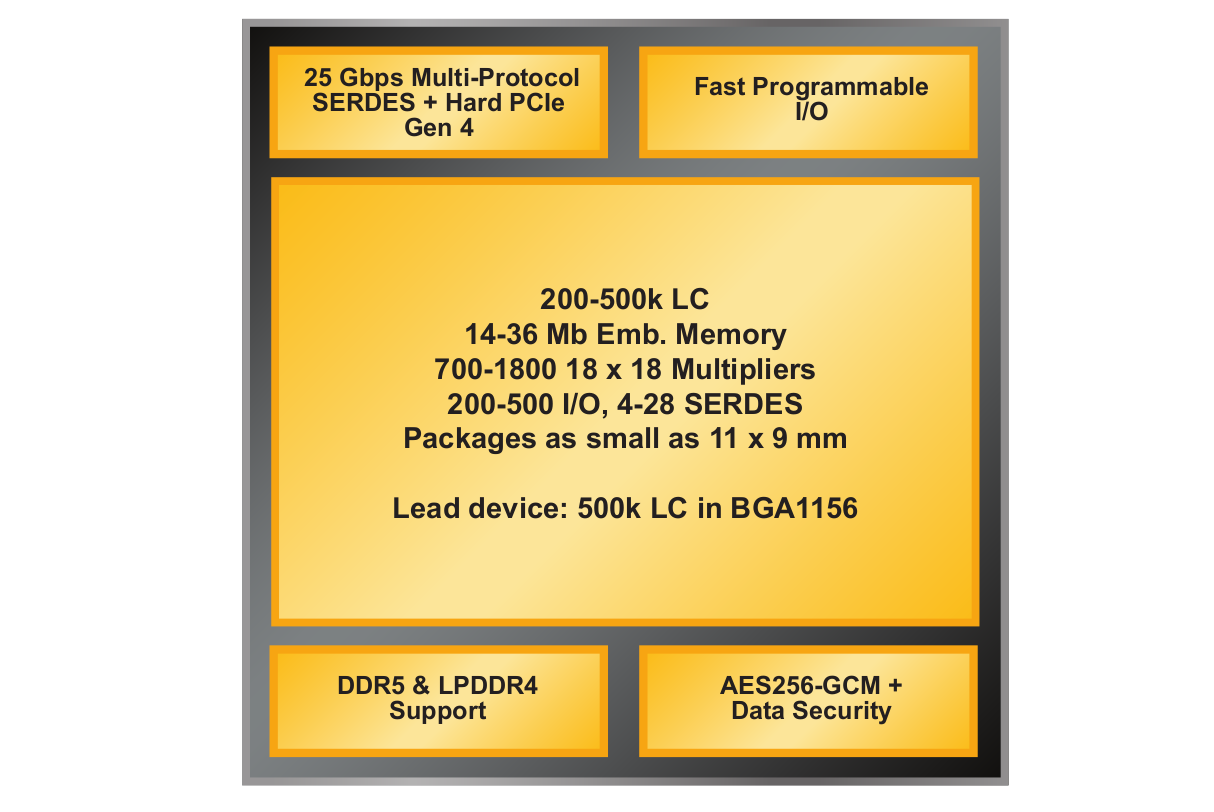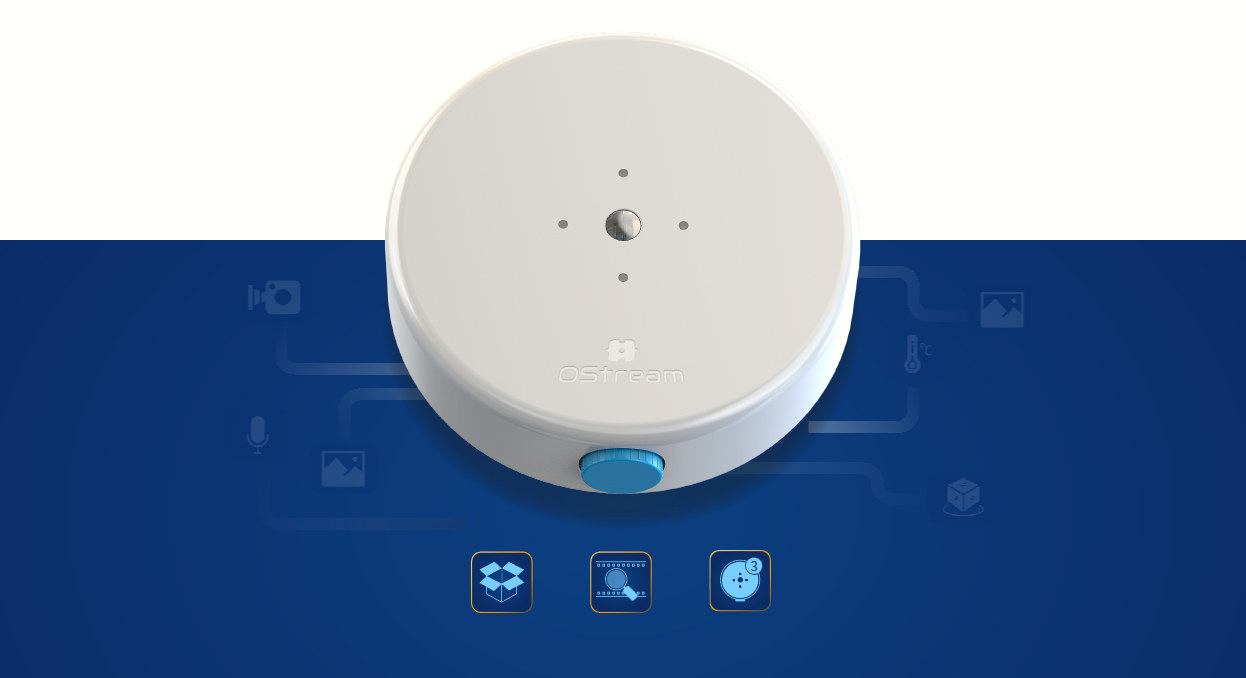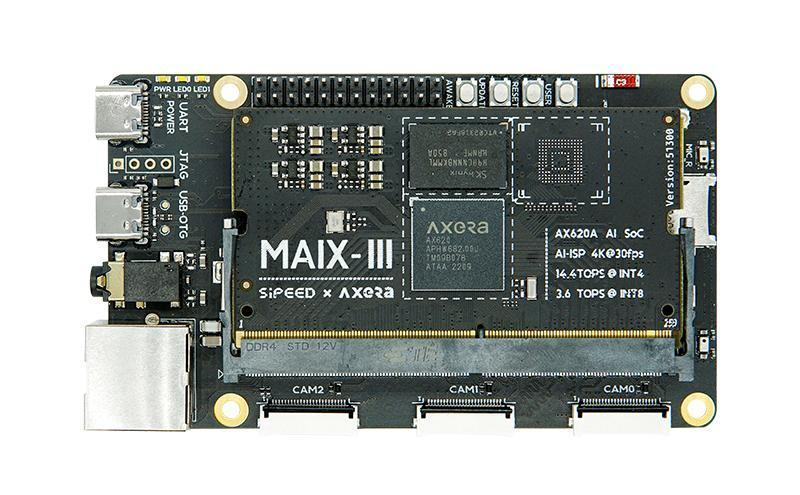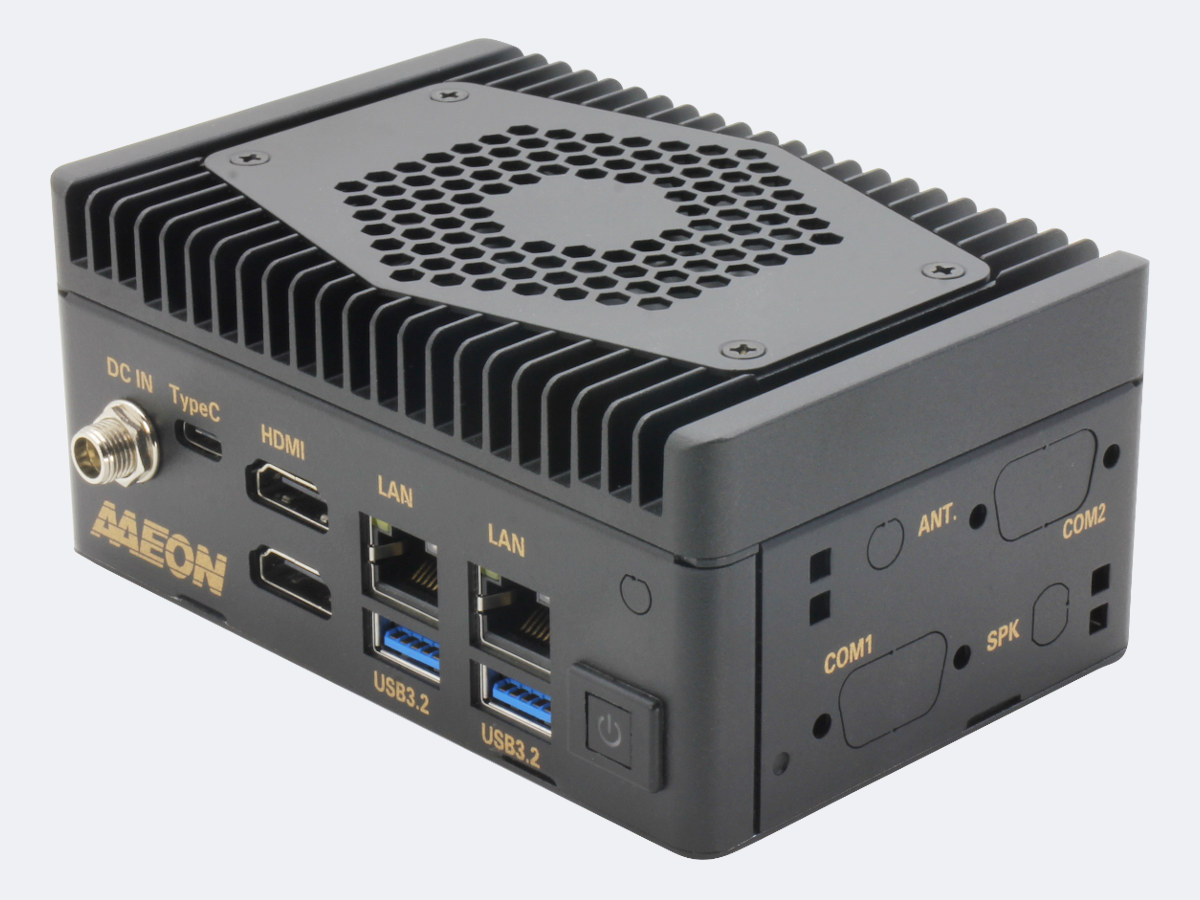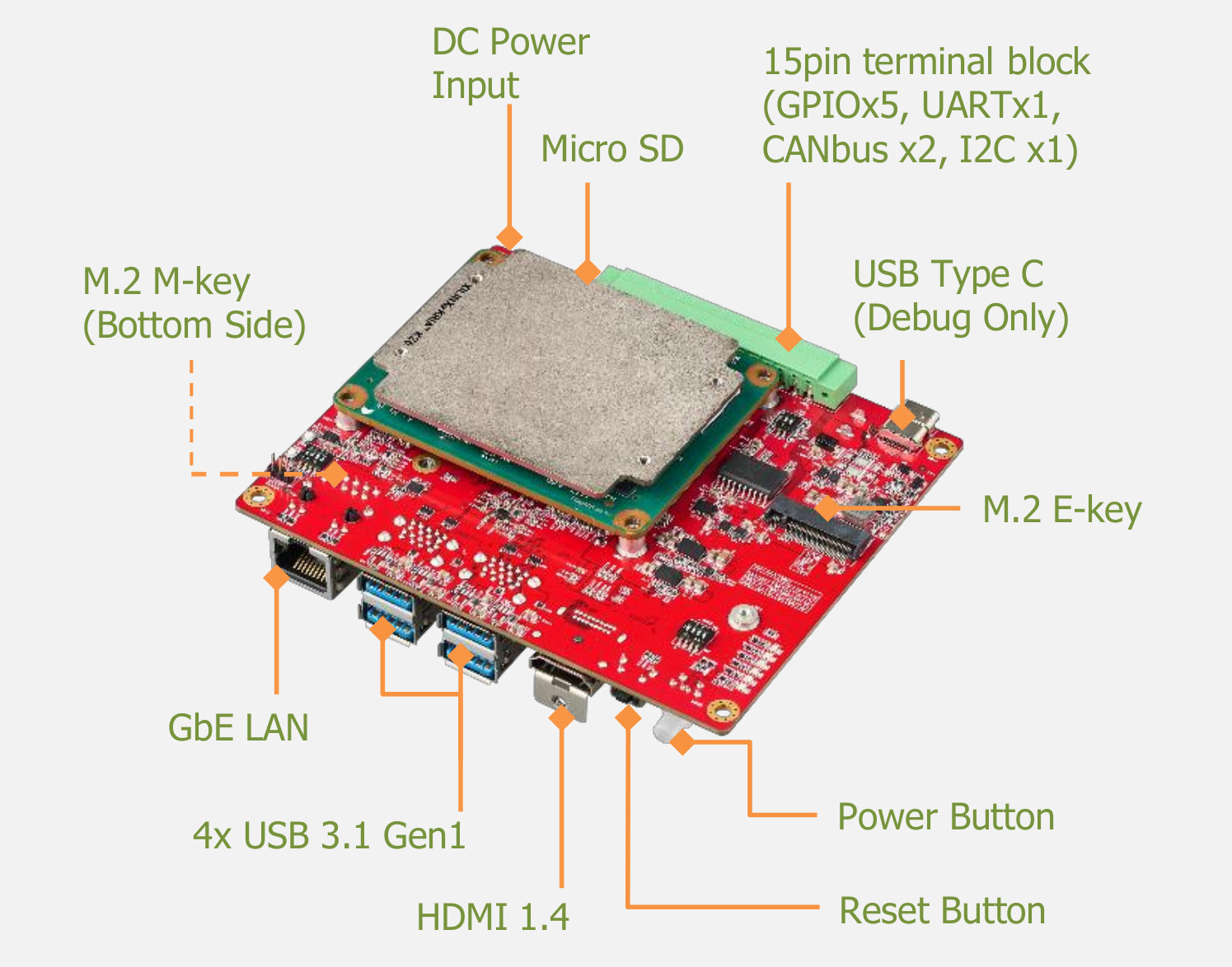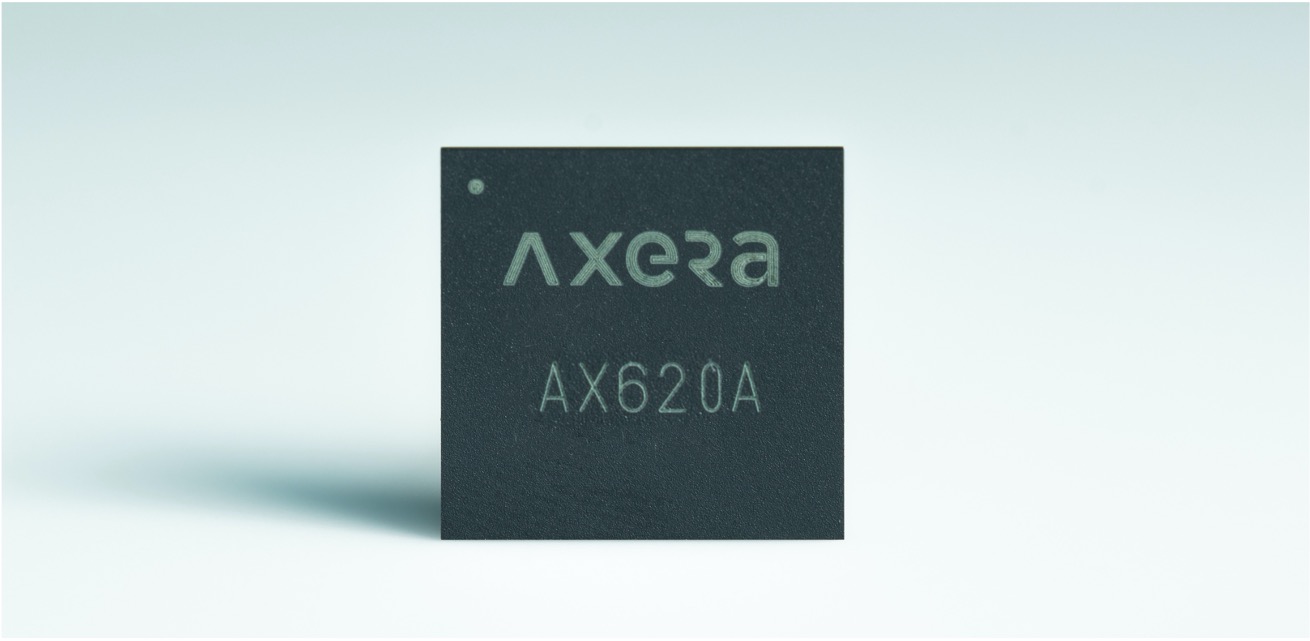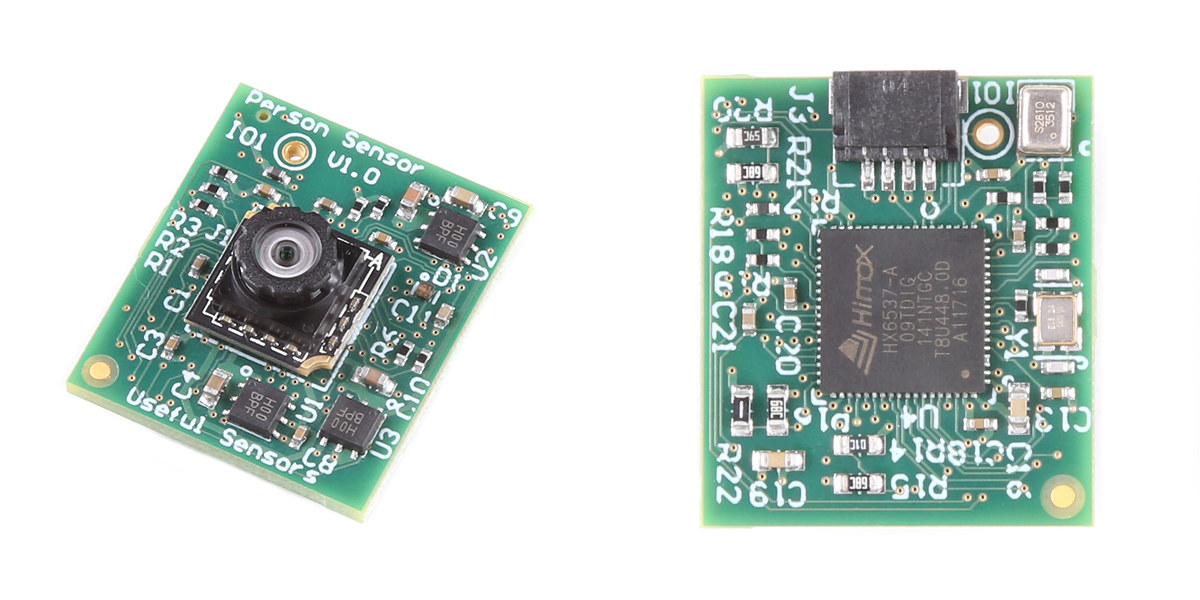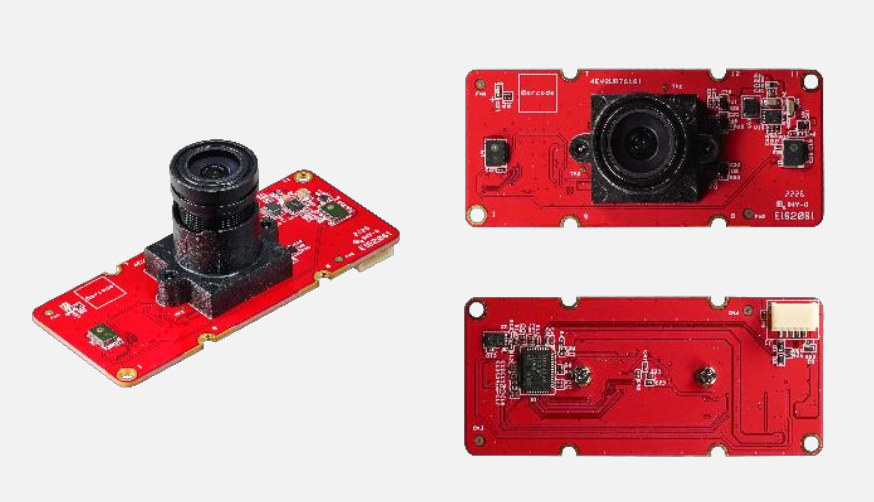Lattice Avant is a new low-power and small form factor mid-range FPGA platform, manufactured with a 16nm FinFET process, and equipped with 25 Gb/s SERDES, hardened PCI Express, external memory PHY interfaces, a high DSP count, and a security engine. Lattice Semi is better known for its entry-level FPGAs such as the iCE40 which is popular in the community thanks to low-cost hardware and support for open-source tools, but the Avant platform marks the company’s entry into the mid-range FPGA market, defined by chips with 100k to 500k logic cells (LCs). Lattice Avant highlights: FPGA fabric – 200K to 500K logic cells up to 350 MHz DSP – 700 to 1,8000 18×18 multipliers @ up to 650 MHz to support the latest AI algorithms Memory 14-36 Mbit embedded memory up to 650 MHz DDR3L/DDR4/LPDDR4 and DDR5 support I/Os 4x to 28x 25 Gbps multi-protocol SERDES Hard PCIe Gen4 200 to […]
Arducam OCam AI camera adds context to video streams in real-time with the PhysicO platform
Arducam OCam, whose name stands for Object Camera, is an AI camera with 3 TOPS of AI performance and designed to work with OStream‘s PhysicO Edge AI media platform that adds context to MP4 video streams in real-time. The camera supports resolutions from QVGA to 2K, takes USB or PoE power, comes with a drag-and-drop AI pipeline for easy programming/configuration, and is also compatible with common AI tools such as TensorFlow, PyTorch, Edge Impulse, and others. Arducam OCam specifications: Resolution – QVGA up to 2K Frame Rate – Up to 60 fps FoV – 80° Audio – Dual beamforming AI processing power – Up to 3 TOPS Power Supply 5V via USB PoE Power Consumption – Up to 5 Watts Dimensions – 10 cm Φ x 3 cm Weight – 400 grams As I understand it, the AI pipeline – named ObjectAgent – runs on the camera itself, and adds […]
Sipeed Maix-III devkit features AXERA AX620A SoC for AI vision applications
Sipeed Maix-III development kit is composed of a core board equipped with AXERA AX620A AI processor and a carrier board exposing several interfaces such as Ethernet, USB, and camera connectors. resources. As noted in our earlier article about the AXERA AX620A chip, it is a quad-core Arm Cortex-A7 chip with an NPU offering a maximum of 14.4 TOPS @ INT4 or 3.6TOPSs @ INT8, and as such, this development board mainly targets AI vision applications. The board is an upgrade to the earlier Speed Maix II with an Allwinner V831 processor. Thanks to the low power consumption of the AXERA AX620A SoC, the Sipeed Maix-III board can be powered directly through its USB port as the system consumers 5W (5V@1A) with the carrier board, the system-on-module, WiFi, Ethernet, a camera, and a 5-inch display. Using the display does not require am additional heatsink or fan, nor does it require an […]
AMD Ryzen Embedded V2516/V2718 mini PC supports three 4K displays, 2.5GbE, RS232/RS422/RS485
AAEON PICO-V2K4-SEMI mini PC, powered by an AMD Ryzen Embedded V2516 or V2718 processor, can drive up to three 4K displays, offers 2.5GbE and GbE networking, several USB 3.2 ports, as well as two optional COM ports supporting RS232, RS422, and RS485. The first mini PC from the company featuring AMD Ryzen V2000 Series processors also comes with up to 32GB RAM, a 64GB NVMe SSD, as well as M.2 and mPCIe sockets for expansion, and its compact form factor makes it suitable for edge computing, embedded gaming, and image processing applications. PICO-V2K4-SEMI specifications: AMD Ryzen Embedded V2000 processor (one or the other) Ryzen V2718 octa-core/16-thread processor @ up to 1.7-4.15 GHz (Turbo) with Radeon RX Vega 7 GPU; TDP: 10-25W Ryzen V2516 hexa-core/12-thread processor @ up to 2.1-3.95 GHz (Turbo) with Radeon RX Vega 6 GPU; TDP: 10-25W System Memory – 8GB to 32GB LPDDR4x 3733 MHz Storage Up […]
Innodisk EXMU-X261 FPGA Machine Vision Platform is based on AMD Xilinx Kria K26 SoM
Innodisk, better known for its embedded storage and memory chips, had announced its intention to turn to the AI market earlier and started with the launch of USB camera modules last month, but the company has gone a step (or two, or three) further with the introduction of the EXMU-X261 FPGA machine vision platform. The EXMU-X261 is powered by an AMD Xilink Kria K26 system-on-module and features HDMI 1.4 video output, Gigabit Ethernet, four USB 3.1 Gen 1 ports for the cameras and other peripherals, as well as two M.2 sockets and a terminal block for expansion. EXMU-X261 specifications: System-on-module – AMD Xilinx Kria K26 FPGA module powered by a Zynq UltraScale+ XCK26 FPGA MPSoC with a quad-core Arm Cortex-A53 processor, up to 250 thousand logic cells, and a H.264/265 video encoder/decoder Storage – MicroSD card socket Video Output – HDMI 1.4 port Networking – Gigabit Ethernet RJ45 port USB […]
AXERA AX620A 4K AI SoC delivers up to 14.4 TOPS for computer vision applications
AXERA AX620A is a high-performance, low-power AI SoC with a quad-core Arm Cortex-A7 processor and a 14.4TOPs @ INT4 or 3.6TOPs @ INT8’s NPU that is slightly inferior to the Amlogic A311D, and mainly used for AI vision applications. With high computing power and built-in image processing capabilities, the AX620A can support a wide range of AI workloads. It also offers low power consumption with low standby power and fast wake-up, so the chip can be integrated into battery-powered products. AXERA AX620A specifications: CPU – Quad-core Arm Cortex-A7 @ 1.0 GHz with 32KB L1 I-cache + 32KB L1 D-cache per core, 256KB L2 cache, FPU and NEON NPU – 14.4 TOPS @ INT4, 3.6 TOPS @ INT8 with support for Imagenet, AlexNet, VGG, ResNet, GoogLeNet, Faster R-CNN, SSD, FPN, Yolo V3, and other neural networks. ISP Proton AI-ISP up to 4Kp30 4 channels of camera support up to 4x 1080p30 Support […]
Easily add face detection to your project with the Person Sensor module
It’s now much easier to AI features to your project thanks to better tools, but as we’ve experienced when trying out Edge Impulse machine learning platform on the XIAO BLE Sense board, it still requires some effort and the learning curve may be higher than some expect. But for common tasks like face detection, there’s no reason for the solution to be hard-to-use or expensive, and Pete Warden (Useful Sensors) has designed the $10 Person Sensor fitted with a camera module pre-programmed with algorithms that detect nearby faces and reports the results over an I2C interface. Person Sensor specifications: ASIC – Himax HX6537-A ultra-low-power AI accelerator @ 400 MHz with 2MB SRAM, 2MB flash Camera Image Sensor – 110 degrees FOV Image scan rate – 7Hz with no facial recognition Image scan rate – 5Hz with facial recognition active Host interface Qwiic connector for the I2C interface up to […]
Innodisk releases USB camera modules for AI applications
Innodisk, better known for its industrial storage solutions and embedded peripherals, has recently announced a shift towards the AI industry, and the first products for this market are three USB 2.0 camera modules with 1920×1080 resolution. All three camera modules are fixed focus. Innodisk EV2U-RMR2 offers HDR support, the EV2U-SGR1 is more compact, offers wider angles, and is optimized for low light conditions, while the EV2U-RMR1 supports HDR in a longer, but much thinner and narrower form factor and is equipped with an M5 lens, instead of an M12 lens for the other models. Innodisk EV2U-RMR2 camera module specifications: Resolution – 1920×1080 @ 30fps Sensor Size – 1/4” Pixel Size – 2 um Lens type – Fixed focus (M12) Lens D/H/V FoV – 86°/72°/38° HDR support Output I/F – USB 2.0 Power consumption – Around 1 Watt Dimensions – 58 x 25 x 22 mm Temperature Range – -20°C ~ […]


